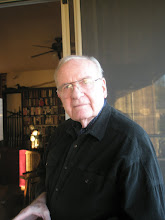There
is the perception that American involvement in wars against terrorism and even
their use of terrorist tactics is something unique to recent times. This would
be false and thus not solely related to contemporary political affairs.
The
conflicts with Native Americans before and after American independence always
had terrorism as an integral element - on both sides. Internationally we fought
terrorism when we took possession of the Philippines after the Spanish American
War in the beginning of the twentieth century. There are many examples of U.S.
counter terrorism operations. Terrorism by Mexican bandit forces under the
command of José Doroteo Arango
Arámbula (Pancho Villa) was a principal weapon against the Southwest
U.S. during the Mexican Border War that lasted more than two years after
1915. In more recent times fifteen years after WWII, Washington became deeply involved
in the 1960's against various African independence movements supported by the
Soviet Union that used terrorism as a principal weapon. The fact is that low
level warfare involving civilians as both perpetrators and victims is, and has
been, a factor throughout history worldwide.
The
issue of terrorism is complicated because the term is defined both as a form of
warfighting, a method of subjugation of a civilian population and as simply a
device to instill fear in an opponent – among other deadly actions. The fact is
that one person's view of a deadly inhuman act is another's belief that these
same terrorist acts are the only way to fight oppression. And both views can be
and are justified. Of course, there are many forms of terrorism. These can
range from psychological warfare instilling fear in opposing forces and their
civilian community to simple brutality against a foe. It is certainly not
limited to followers of Islam.
Perhaps
the least understood aspect of terrorism is the utilization of carefully analyzed
intelligence. The tragedy of 9/11 for the United States was the result of a
carefully planned and executed operation by Al Qaeda based on a well-thought
out assessment of American symbols and their vulnerability. What was not well
done was the fact that the terrorists did not consider their own vulnerability
to an American counteraction. This is a mistake that often occurs especially by
committed terrorist organizations that think only of their own destructive
ambitions often present when the activity is religiously driven without regard
for human life including their own.
The
willingness of terrorists to die for their cause is a characteristic that is
often undervalued when potential Western targets seek to establish defenses
against possible attacks. The fact is that – as the old saying goes – the best
defense is a good offense. However, that is a problem when the defensive action
requires extended operations directed at a distant target. Afghanistan is a
good example. The need to remain in an operational mode a long distance from
the homeland in order to protect that homeland is both a weakness and a
strength in anti-terror ops. While an effective long-distance campaign is a
method of keeping down local actions by a dedicated terrorist enemy operating
in much smaller units, it is not a guarantee for preventing lower level attacks
back at “home base”.
It
becomes extremely important for the civilian population of a given terrorist-targeted
country to remain alert to the danger of the evolution of terrorist structures operating
deeply under cover. It is instructive to realize that Osama bin Laden came from
an extremely rich and well-known family. This background tended to be perceived
as non-involvement in terrorist activities - a major error. His father had created a highly successful
construction and community development firm with activities in many parts of
the Middle East. The family was well regarded by the Saudi Royal Family. ObL
took advantage of the access and financial strength of his father's creation to
organize and fund Al Qaeda.
All
this was under the nose of the usually perceptive Saudi security structure. Al
Qaeda and its offspring today still benefit from the wealth and contacts
originally exploited by the now deceased ObL from his father's firm. Of course,
it is also true that one of the many methods of financing terrorist activities
comes from numerous sources ranging from foreign governments to financial
elements fearful of becoming targets and thus vulnerable to blackmail. The
latter follows the tradition of modern organized crime
More
and more the terrorist organizations have become increasingly sophisticated in
their operations and support structure. The overt side of terrorism, the
harrowing attacks on civilian targets, actually distracts from the
broader political purpose of local and regional domination. This maneuver, too,
can be traced back to even ancient times. As the French saying goes: “All that
changes remains the same.” And that is
especially true in the world of terrorism!

Comments
Post a Comment